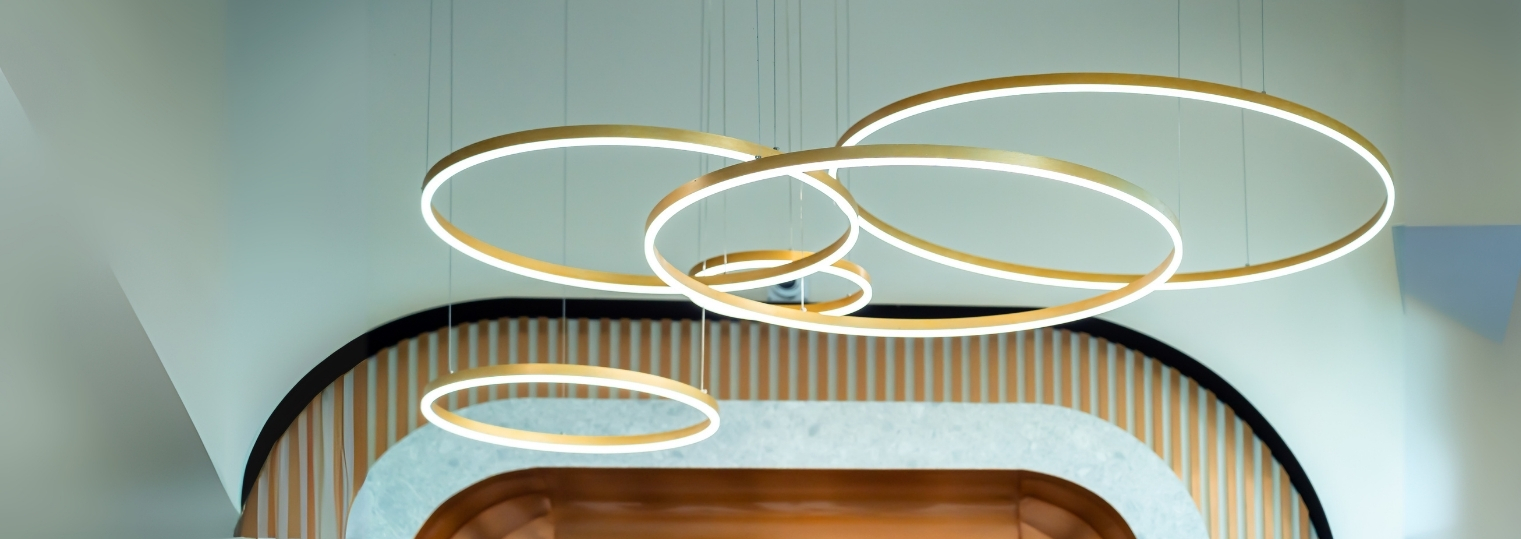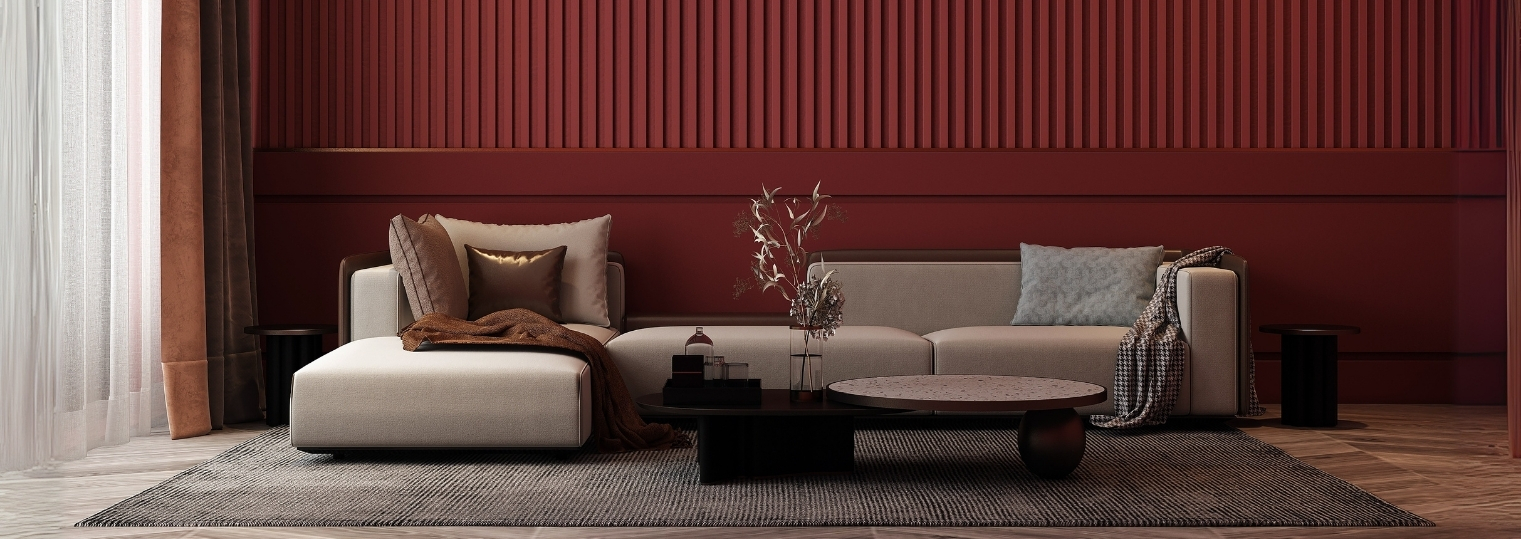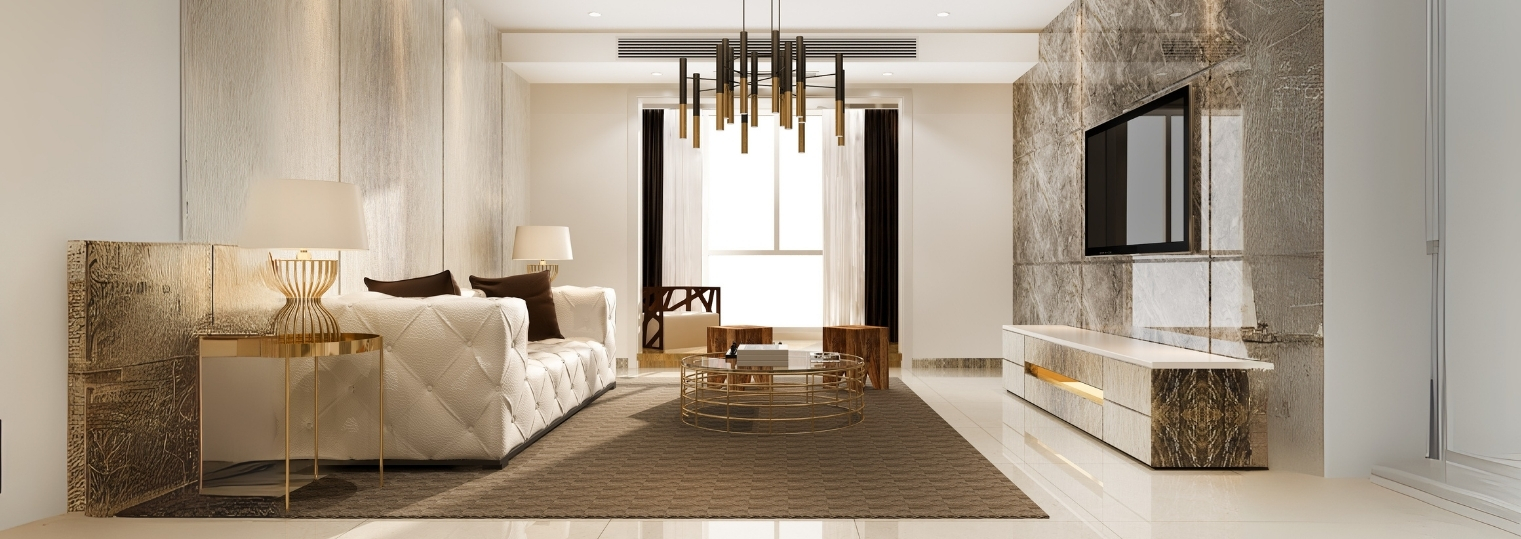Amidst the heavy stir of the Indian cities unfolds its colourful and one-size-does not-filt-all approach; within our homes, we find refuge from noise and mishmash which hangs around urban life. But there, in our private space as well, sound has two faces. Children playing, clashing of dishes, and the strains of singing devotional music—these everyday sounds together form a warm bed of sound. On the other hand, there’s the constant barrage of noise from outside—traffic jams, construction work, the distant blare of a loudspeaker, or the honking of vehicles during a festival procession.
Maintaining home as a visual spectacle isn’t always a problem; it should, however, be serene to the ears for most Indian houses. Acoustic interior design is an elusive practice; without it, effective environment managing sound would never be created. It’s about making sure every nook in your house does the job: you can listen clearly, speak without an echo, and rest without being overwhelmed by unwanted noise.
These factors influence the acoustic environment created within an Indian home: our dense neighbourhood spaces, our traditional forms of architecture, liked and therefore clung to, plus the materials commonly used of marble floors, high ceilings, and large windows. It is these features, when echoing sound waves back at irregular intervals, that turn into distinct echoes, reverberations, and general noise discomfort.
And Indian houses never fall silent, with their morning prayers and evening get-togethers, clattering utensils in the kitchen, and the fan hung up since last month buzzing somewhere in the ceiling. These everyday sounds are second nature to us—the very echo of our culture and ways of living—but when one is not managing the acoustics properly, it will definitely lead to a messy and noisy environment. Think of trying to hold an intimate conversation in a living room that bounces every word around or fighting to concentrate in a home office while outside noise barges through thin walls and large windows. It is circumstances like these that make good acoustic design such an important factor.
Acoustic interior design is more than the insulation of sound; it’s about the reinstatement of a proper balance within the sonic environment-one that harmoniously works with all other aesthetic and functional considerations of the room.
Whether you stay in a high-rise apartment in an ongoing metropolis, a conventional bungalow, or a state-of-the-art high-rise, the improvement of acoustics will help you add that much more to the quality of life and enable your home to be a sanctuary where you really relax.
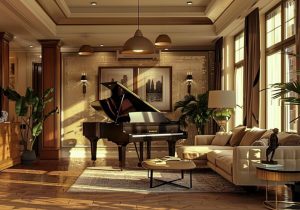
In Indian homes, sound is always a part of life, shaped by our culture, climate, and surroundings. From the cacophony prevalent in the streets of urban areas to the serene sounds of nature in the countryside, the acoustic environment can be quite different indeed.
Whether it is the honking of vehicles, construction sounds, or the ebullient activity of neighbourhoods, in busy metropolises like Mumbai, Bangalore, or Delhi, the challenge is often about keeping the noise outside. In other quieter areas, however, the challenge could be more towards clarity-sounds of speech inside one’s house for good voice modulation, or in cases where large family gatherings frequently take place, or during pooja ceremonies.
This part of Acoustic interior design in Indian homes creates space for effective sound management, catering to comfort and functionality. It may entail the reduction of unwanted noise, clarity of speech, or even the creation of an environment that enhances restiveness with soothingness. Be it a modern high-rise apartment, a traditional bungalow, or a heritage home, acoustic design will help you achieve a balanced sound environment that suits your requirements.
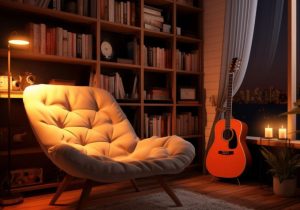
Reflection, Absorption, and Diffusion in the Indian Context: Materials used in Indian homes include marble, tiles, and large windows, which are more frequently used for durability and cooling effects in most of the hot parts of the country. These hard surfaces tend to reflect sound, making echoes and unclear auditory performance in rooms possible. Here is where understanding the principles of reflection, absorption, and diffusion becomes imperative.
Sound Reflection: This would include hard surfaces like tiled floors, marble countertops, and glass for windows that reflect sound, thereby creating irksome echoes. In large, open rooms common in most Indian homes, this may make conversations difficult to conduct and give a sense of chaos.
Sound Absorption: The soft items-rugs, curtains, and upholstered furniture-absorb sound to avoid echoes and make the atmosphere noise-free. In homes with tile or marble floors, rugs and drapes can do a lot in homes to improve acoustics dramatically.
Sound Diffusion: Diffusion scatters sound waves and breaks up any echoes and distributes it uniformly in the room. Incorporate bookshelves or textured walls into your design, or traditional jharokhas, elaborately designed windows.
It is the art of designing your space to present an ideal acoustic environment. It might be in the form of traditional sound control devices like thick drapes, wooden screens, or potted houseplants inside the homes. It strikes a perfect balance between the aesthetic and acoustic qualities that would further elevate your home’s architectural style and its surroundings.
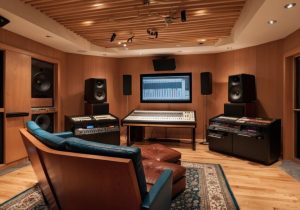
Eco-friendly Acoustic Solutions: Sustainability in this modern world is of great concern and an important aspect for Indian interior designers. Acoustic materials are no different. One can expect increased utilization of environmental, friendly materials that will enhance acoustics and also meet the sustainable living parameters in 2024.
Bamboo Panels: Bamboo, because of its very fast growth and renewal capability, has been put to a greater use in acoustic panels and furniture. It’s a great material not only for noise reduction but also for adding a natural and soothing element to interiors.
Recycled Textiles: Sound-absorbing panels and rugs can now be made from fabrics from recycled materials originating from sources such as PET bottles. These textiles add to sound management while reducing environmental impact.
Natural Wool Rugs: This is a sustainable, naturally available raw material. Besides, wool has very good sound-absorbing properties. These rugs can be used to soften acoustics in rooms with hard flooring. Thus, they can be quite ideal for Indian homes that normally have marble or tile floors.
Traditional Indian Elements: Acoustic optimization can also be carried out with traditional Indian elements. Example:
These are Jaali screens that are intricately carved wooden or stone screens; they mask sound and reduce echo effectively in large rooms while working as an element of decor.
Handwoven textiles work great, too, such as Indian handloom products like dhurries-traditional rugs-and woven curtains that help absorb sound while adding texture and warmth to a space.
Features of Clay and Terracotta: The wall or floor can be treated with clay tiles or terracotta feature pieces for natural sound diffusion, keeping the area cool in the process.
Intelligent Acoustic Technology: With more use of technology in our living spaces, intelligent acoustic solutions have started to gain momentum. Such solutions would evolve with specific sound challenges of homes in India to offer personalized and dynamic sound management.
Adaptive Sound Systems: Smart sound systems automatically adjust the acoustics in your house, depending on the time of day or activity. For instance, during video calls, voices become clearer; for movie nights, it gets much more dramatic.
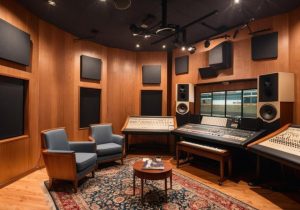
Material Selection: Selection of appropriate materials plays a key role in optimizing the acoustics of an Indian home, as most design decisions are influenced by climatic or cultural factors.
Heavy Curtains and Drapes: These help minimize the noise from outside when there are large windows or high ceilings in your home to increase the acoustic quality of the room. Opt for velvet or brocade because such fabrics are generally used in Indian décor.
Area rugs or carpets in the rooms with hard flooring absorb sound and avoid echo. Traditional Indian rugs to present the alternatives include Kashmiri carpets or handwoven dhurries, which beautify your home while reflecting cultural heritage.
Acoustic Wall Panels: The installation of acoustic panels on the wall can really reduce the overall noise and increase the clarity of sound, especially in those places with high ceilings or an open layout. Panels made of natural materials, like jute and cork, are not only effective in this regard but also eco-friendly.
Furniture Placement and Layout: How you arrange your furniture may also have its effect on house acoustics.
Eliminate Reflections from Hard Surfaces: Moving furniture away from walls and using soft furnishings such as cushions and throws absorb sound and reduce reflections. For large living rooms, set a large sofa set in the middle of the room to cut into sound waves
Bookshelf and screens: This is something that diffuses the sound-a bookshelf containing books or ornamental items. Also, in tradition, wooden screens or any room dividers will create acoustic zones in open-plan layout that most modern Indian homes are moving towards.
Indoor plant additions serve twofold functions: they are great for air quality and acoustic properties. The addition of indoor plants-large ones, like palms or rubber plants-will help absorb the sound and reduce the noise level to produce a more peaceful environment.
Urban Noise: soundproof windows and doors for homes situated in busy cities. These block out the traffic, street noise, and other disturbances to give you a quieter indoor ambiance. Consider installing double-glazed windows, which work effectively in reducing such external noise.
High Ceilings: the reason they sound annoyingly echoing is because of their high ceiling. To counter this, use some hanging light fixtures, chandeliers, or even ceiling-mounted acoustic panels that will absorb sound.
Open-Plan Spaces: Variations in zone differentiation can be achieved through the use of rugs, furniture, and acoustic panels in an open-plan home to control sound and reduce noise interference between spaces.
It can help create sound-monitoring devices, driven by AI, to detect real-time acoustic environments and provide suggestions on ways to improve the quality of the sound. Such a system would prove highly valuable for multi-functional spaces, living rooms, or even home offices.
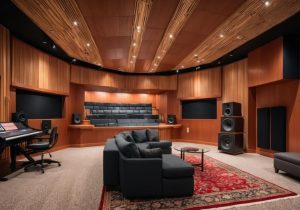
Living Room: Since the living room is the hub of all activity for any Indian household, this room should also fall under acoustic optimization.
Balanced Acoustics: A proper blend of the sound-absorbing materials like rugs and curtains with sound-diffusing elements such as textured walls or wood panel furniture will help give it a balanced environment of sound.
Speakers Placement: For those homes with home theaters, place speakers in such a way that the sound can always be projected into the seating area to ensure completeness in audio effect.
Bedroom: The bedroom should be quiet and still for rest and repose.
Noise cancellation: It is at the bedroom that heavy drapes or blackout curtains could block out outside noise. Consider soundproofing walls facing noisy streets or communal areas.
Soft Furnishings: Adding soft furnishings such as upholstered headboards, cushions and rugs to soak off sound for a tranquil setting.
Home Office: This should be acoustically fitted since almost all corporate employees in the world are now working from home.
Minimizing the Noise Factor: Place acoustic panels on walls and carpets or rugs to reduce resonance. Your desk should be kept away from noise sources while you can consider placing a door sweep to block sounds from coming in through the gap under the door.
Clarity: If you receive lots of calls or you video-conference a lot, then you want to hear and be heard as clear as possible, which is why you will want to bring in soundproofing into your space and set it up in such a way that it reduces resonance or echo.
Acoustic interior design goes beyond mere noise reduction; it’s about crafting a home where sound enhances your lifestyle and promotes comfort. Blending new trends such as sustainable materials and smart technologies into traditional Indian design elements, you will be able to create a functionally beautiful sound-optimized home.
At Bonito Designs, we believe your home is much more than just a house. It’s your haven, a statement of your personality, and a place where you must feel comfortable inside out. In the vibrant and often noisy perspective that is Indian living, finding that comfort requires addressing acoustics. That’s where we come in.
No two homes, much like no two people, are alike in a country of over 1.4 billion people. You are one in a billion, and your home should be just as unique. Be nestled right in the hustle and bustle of a modern high-rise in Mumbai, enjoy the quiet charm of a traditional bungalow in Bangalore, or reside in a heritage home in Jaipur-your living deserves to be just as unique as you are.
Everything that goes on at Bonito Designs is about quality-from making your home look great to sounding great, too. We use nothing but premium materials passed through seven quality checks and over 400 tests. Be it sound-absorbing panels, heavy curtains, or soft furnishings, we source materials that do the magic effectively and are durable. With our in-house manufacturing, everything is done to perfection-from acoustic panels that fit nicely with your décor to rugs to soften the echoes of tiled floors.
We understand how this goes with your house, so we worked on streamlining the entire process to deliver in 90 days. More than 300 skilled designers and craftsmen make up our team; efficient performance by them means each detail will be carefully tended to so you can enjoy your new and acoustically enhanced home sooner.
Acoustic design is just a jigsaw in the larger scheme of things. At Bonito Designs, we do full-home interior design services, offering complete solutions right from layout and lighting to furniture and finishes. We create cohesive and harmonious spaces where every element, including acoustics, works together in harmony to elevate your living experience. Whether it be a quiet home office, a serene bedroom, or even a vibrant living room, we pay attention to every detail in such a way that every aspect of your home is painstakingly thought out.
In our quest to ensure that quality and the best fit are achieved for your home, we manufacture a wide variety of products in-house. This lets us offer direct solutions for your needs: from a custom acoustic panel to a specifically designed furniture piece or some quirky decor element serving as a sound diffuser. Controlling the process ourselves enables us to ensure every product meets our stringent standards and integrates as one within your overall design.
As the first interior design brand to be ISO-certified in India, Bonito Designs operates on the principle of maintaining the highest standards of quality, safety, and reliability. Indeed, our certification stands as proof of how much we believe in striving for excellence in everything: from design and manufacturing to customer service. You can be sure that you are investing in a lifelong beautiful home with Bonito Designs.
Designing your dream home should be an enjoyable experience, not distressing. So we have easy EMI options, making it that much more easy for you to invest in a sound-optimized living space. Now you can balance the look, comfort, and functionality of the perfect setting without feeling the pinch.
Bonito Designs prides itself on branded home interior services, setting it apart from its competitors. Its designs are not only stylish and workable but highly distinctive, reflecting the latest trends in line with timeless principles. From incorporating rich Indian textures into a space, the elegance of natural materials to the sophistication of modern technology, we strive to create unique environments for our clients, imbued with character and comfort.
Technology today plays an important role in enhancing comfort and functionality at home. Bonito Designs integrates adaptive acoustic systems, sound-monitoring devices, and state-of-the-art smart home technologies that make environments as intelligent as they are beautiful. We ensure that your home will be equipped with the right tools to manage sound in real time and offer you the ultimate modern living.
Besides being an interior designing service, Bonito Designs shares a commitment to shape your home as an extension of your lifestyle and values. Let us design a home that sounds just as great as it looks, acoustically tuned to your needs.
